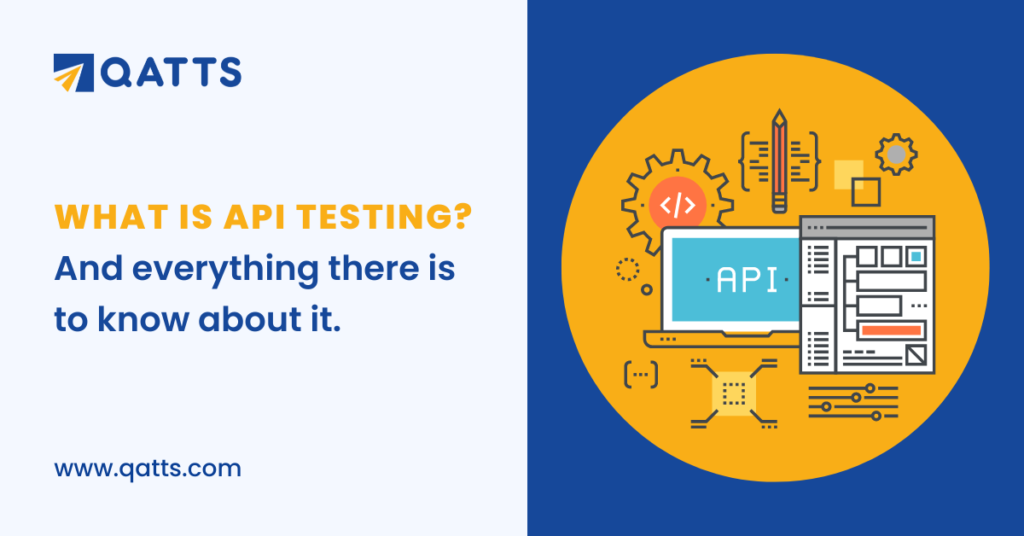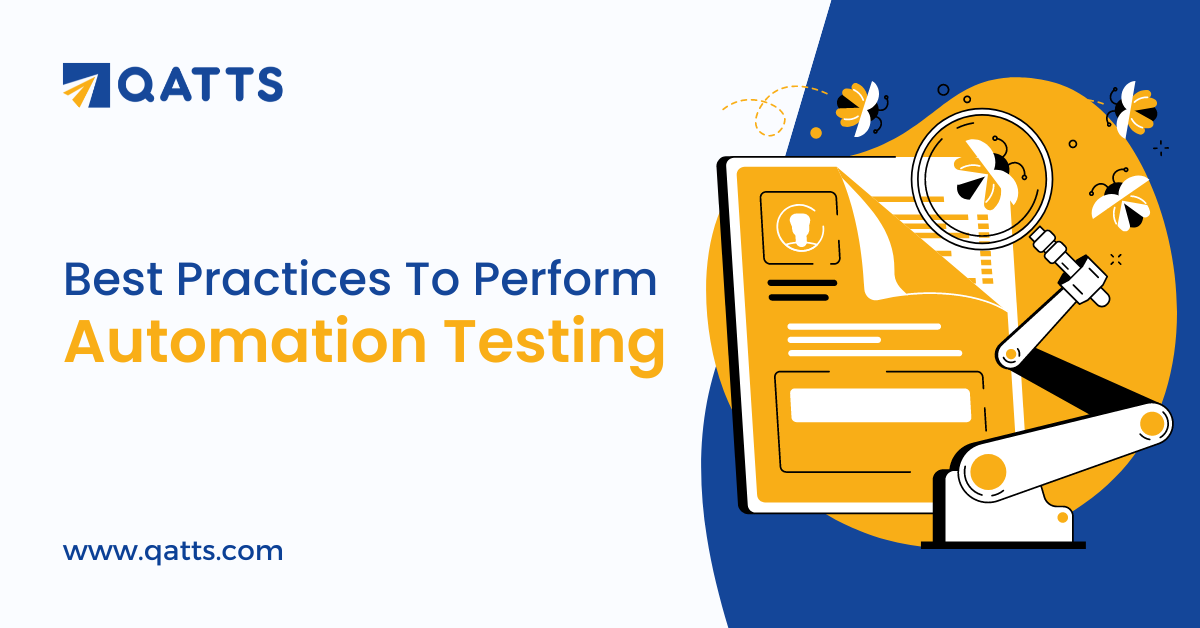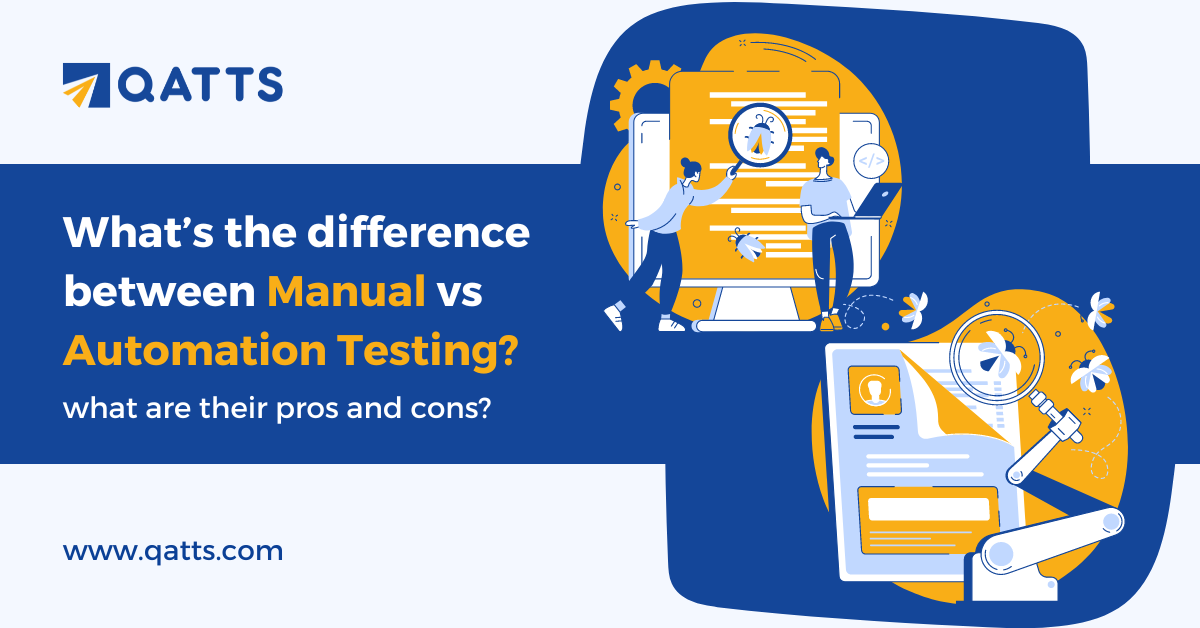
API testing has become one of the most common practices in software testing these days, owing to the huge amount of data transfers and sharing, across different systems and applications. API testing not only makes your entire testing strategy much more efficient on the whole, but also helps deliver your software at a much faster pace, owing to its precise nature.
In this blog, we will be looking at what API testing means, and what it encompasses.
What is API?
API (Application Programming Interface) is a computing interface that is used for the communication and data exchange between two separate software systems. Any software system that executes an API includes several functions/subroutines/features that another software system can perform, with which the communication is done. API defines a lot of things, such as requests that can be made, how to make requests, data formats that can be used, etc. between two software systems.
What is API testing?
API testing is software, also known as API testing software, which analyses and validates an API, and makes sure that it fulfills its expected functionality, security, performance, and reliability. Rather than the normal inputs and outputs that we use in our day-to-day lives, the software is used in API Testing to send calls, get output, and not down the system’s response. API tests are done directly, or as part of integration testing.
API tests are very different from GUI Tests and won’t concentrate on the look and feel of an application. They mainly concentrate on the business logic layer of the software architecture, the security of the application and data responses.
API tests are generally performed by making requests to one or more API endpoints and comparing the response with expected results. API testing is frequently automated and used by DevOps, quality assurance (QA) and development teams for continuous testing of the software.
Types of API Testing
There are different types of testing, when you put an API for testing. Here are the different types of API testing:
- Unit testing
Unit testing is that in which testing is done to a single endpoint, with a single request, looking for a single response or set of responses. - Integration testing
Integration testing is the most commonly used form of AP testing, given that APIs are at the center of most integrations between internal or third-party services. - End-to-End Testing or Validation Testing
End-to-End testing, or validation testing, helps validate the flow of data and information between a few different API connections, with the help of questions. Three set of questions are asked, which hep address the whole project. The first set of questions concerns the product, while the second set of questions focuses on the API’s behaviour, and the third set of questions looks at the efficiency of the API. - Functional testing
Functional testing is done to make sure that the API is working exactly as it is supposed to. It analyzes specific functions within the codebase to guarantee that the API functions within its expected parameters and can handle errors if and when the results are outside the designated parameters. - Load testing
Load testing is done to check how many calls an API can handle at a time. It is usually performed after a specific unit, or the entire codebase, has been completed, to determine whether the theoretical solution can also work as a practical solution when acting under a specified load. - Reliability testing
Reliability testing is done to make sure that the API can give consistent results and the connection between platforms is constant. - Security testing
Security testing is done to validate the encryption methods the API uses as well as the access control design. While it is usually clubbed with either penetration or fuzz testing, it is also done individually. - Penetration testing
In penetration testing, the AP is attacked by someone who has very limited knowledge about the API. The outcome is then analyzed by the test performers. - Fuzz testing
In fuzz testing, huge amounts of random data is forcibly loaded, also known as noise or fuzz, into the system, attempting to create negative behavior, such as a forced crash or overflow, to check how the API works under those circumstances. - Performance testing
Performance testing is done to make sure that the API, in the end, works exactly as it is supposed to, and to check whether it gives the exact results it’s supposed to.
Approach of API Testing
One thing that anyone should remember before getting into API testing is that test cases should be written for API testing, as there would be no way for the test to give you the desired outcome without someone declaring the conditions first. Test cases help define the conditions or variables under which testers can determine whether a specific system performs correctly and responds appropriately. Some questions or parameters that the test performer should consider including are:
- What are the endpoints that are available for testing?
- What response codes are expected for successful and unsuccessful requests?
- Which error message is expected to appear in the body of an unsuccessful request?
Once the test cases have been specified, test performers can conduct the test and compare the expected results to the actual results. The test should analyze responses that include:
- Reply time
- Data quality
- Confirmation of authorization
- HTTP status code
- Error codes.
Here are some more points to be kept in mind while performing an API test:
- Watch for failures or unexpected inputs
- Response time should be within the stipulated time limit
- API should be secured against potential attacks
- API should be able to handle unexpected user load
- Tests should be constructed in a way where users can’t affect the application
- API can work across multiple browsers and devices.
- API test should also analyze performance and security
How to perform API Testing?
Every API testing procedure should consist of the following API testing methods:
- Discovery Testing
Discovery testing is done to check if the listed resources can be enumerated, created, updated and deleted , when the test performer calls listed in the API documentation. - Usability Testing
Usability testing usually verifies whether the API is functional and user-friendly or not. It also checks whether the API integrates well with another platform. - Security Testing
Security testing includes what type of authentication is required and whether sensitive data is encrypted over HTTP or both. - Automated testing
API testing should be concluded in the creation of a set of scripts or a tool that can be used to execute the API in timely intervals. - Documentation
Documentation is usually a part of the final deliverables. Those performing the test usually make sure the documentation provides enough information to interact with the API.
Types of Bugs that API Testing detects
The following is a list of the possible types of bugs that API testing usually detects:
- When the program fails to handle error conditions gracefully
- Unused flags
- Missing or duplicate functionality
- Reliability Issues: Difficulty in connecting and getting a response from the API.
- Security Issues
- Multi-threading issues
- Performance Issues: API response time is very high
- Improper errors/warning to a caller
- Incorrect handling of valid argument values
- Response Data is not structured correctly (JSON or XML)
Challenges of API Testing
As is the case with any other form of testing, API testing too faces its own share of challenges, some of which include the following:
- The main challenge would be in web API testing, where the problem is usually with Parameter Combination, Parameter Selection, and Call Sequencing.
- There is no GUI available to test the application, which makes it difficult to give input values
- Validating and verifying the output in a different system is little difficult for test performers, despite integration.
- Parameter selection and categorization is required to be mandatorily known to those performing the test
- Exception handling function needs to be tested
- Coding knowledge is necessary for those conducting the test
10 tips for beginners in API testing
- Understanding API requirements
Naturally, like any other testing procedure, API testing also has certain requirements. So, before you begin testing, you need to understand its requirements. Always know two things: What is the API’s purpose? and, what is the workflow of the application; and where is the API in that flow? - Specify API output status
The most common API output you need to verify in API testing is the response status code. Every API response status code is separated into five classes (or categories) in a global standard. The first digit of the status code defines the class of response, while the last two digits do not have any class or categorization role.
There are five values for the first digit:- 1xx (Informational): The request is received and continues to be processed
- 2xx (Successful): The request is successfully received, understood, and accepted
- 3xx (Redirection): Further action needs to be taken to complete the request
- 4xx (Client Error): The request contains the wrong syntax or cannot be fulfilled
- 5xx (Server Error): The server failed to fulfil an apparently valid request
- Focus on small functional APIs
In a testing project, there are always some APIs that are quite simple, with only one or two inputs such as login API, get token API, health check API, etc. You should also avoid testing more than one API in a test case as it can be painful to debug if errors ,occur because you will have to debug the data flow generated by API in a sequence, which becomes very complicated. Hence, keep your testing as simple as possible. - Organize API endpoints
A testing project may have a few or even hundreds of APIs for testing. It is always advisable for you to organize them into categories for better test management. - Leverage automation capability for API testing
Leverage automation capability for your API testing process as much and as early as possible, as it has a lot of benefits. - Choose a suitable automation tool
Choosing the right API testing automation tool is always important. Make sure that the tool supports the test the API/Web service types that your AUT (Application Under Test) is using, and that tool supports the authorization methods that your AUT services require. - Choose suitable verification methods
There are some basic methods to verify an API response body content:- Compare the whole response body content with the expected information
- Compare each attribute value of the response
- Compare matching with regular expression
- Create positive and negative tests
API testing requires both positive and negative tests to make sure that the API is working correctly. As API testing is considered to be a type of black-box testing, both types of testing are driven by input and output data. - Live testing process
Scheduling API test execution every day while the testing process is live is highly recommended. Since API test execution is fast, stable, and small enough, it is easy to add more tests into the current testing process with minimum risks. This API testing method makes the entire process easier, as it saves a lot of time. - Do not underestimate API automation testing
The most important part of API automation testing, or API testing automation, is test data management and verification. It is common that testing a few first APIs such as login, query some resources, etc. is quite simple. However, the testing task becomes more and more difficult as you go to further APIs. Therefore, the API testing task is easy to be underestimated.
Conclusion
As we have read above, API testing is a fairly simple procedure, but it gets complicated if the one performing the test doesn’t have enough knowledge or experience about it. It is always important to make sure that API testing is done carefully and precisely, as a lot depends upon it. QATTS provides the tests performers with one of the best environments and features for API testing. For more information, visit Automated testing Tool | software test automation services in UK & US- QATTS


